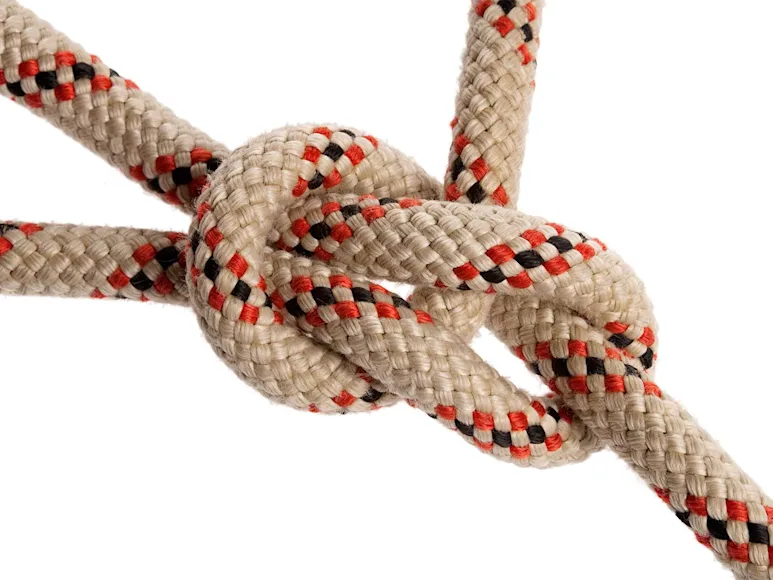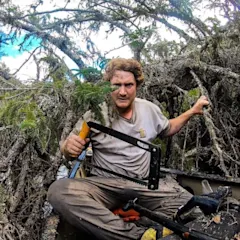_We may earn revenue from the products available on this page and participate in affiliate programs. Learn more ›
_
A knowledge and mastery of tying knots is essential for anyone who spends time in the outdoors. And, sure, when faced with certain tasks that require knot-tying, you might be able to get away with winging it up to a point. But at the end of the day, if you can learn a few key knots, you’ll find yourself bungling around less often—not to mention save yourself some time and be safer.
Aside from a couple essential strong fishing knots
, such as the Clinch Knot and Blood Knot, the knots and hitches below are the ones you’re going to need in the majority of situations when it comes to general outdoor pursuits. It can take some time to get proficient at learning how to tie a knot, so it’s best to practice and master these five knots before you need to tie one in the wild.
Table of Contents: How to Tie a Knot
Basic Knots
The Canadian Jam Knot
The Square Knot
The Quick-Release Knot
The Bowline Knot
The Heaving Line Knot
The Prusik Knot
The Fisherman’s Knot
Basic Hitches
The Trucker’s Hitch
Two Half Hitches
The Clove Hitch
The Pile Hitch
The Killick Hitch
Basic Knots: How to Tie Them
How to Tie the Canadian Jam Knot
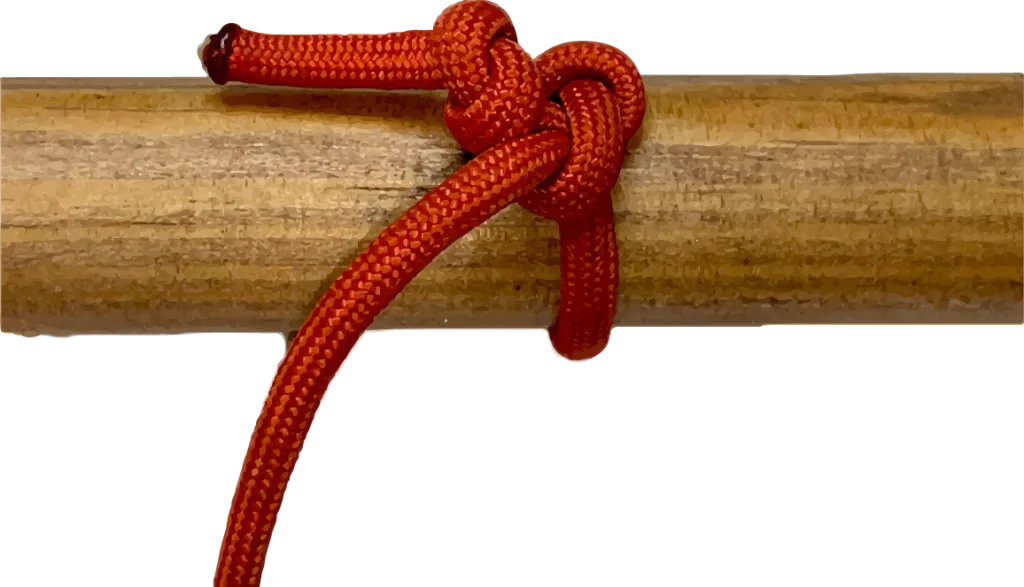
A completed Canadian Jam Knot. Jim Baird
The Canadian Jam Know is great for survival and backcountry purposes, such as splinting a broken canoe seat or affixing a ridge pole on a bushcraft shelter. The knot can be pulled to be super tight and it doesn’t use up much cordage. It’s also a good knot for fishing line, specifically when you want to tie your line to your reel’s
spool.
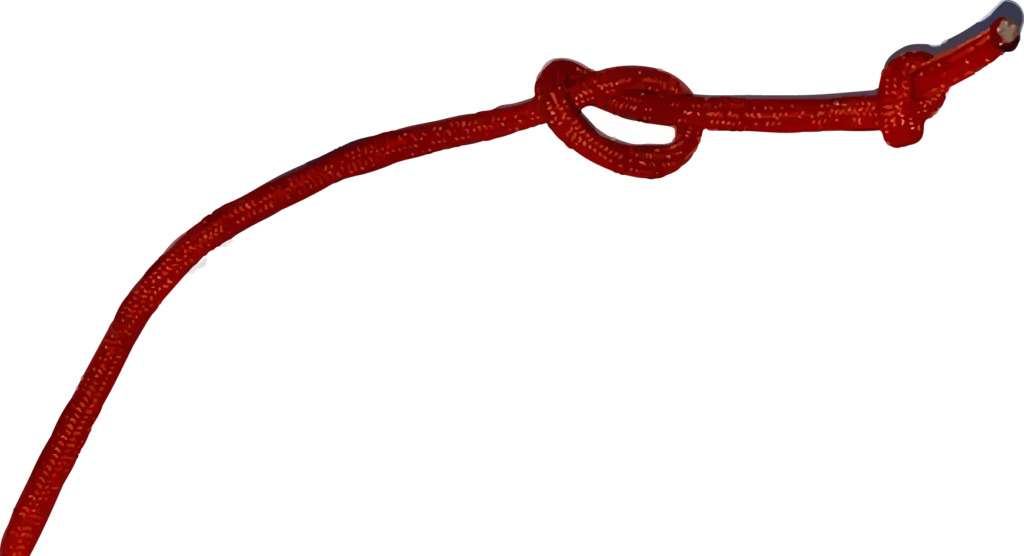
Jim Baird
Step 1: Take a length of cordage and tie a simple overhand knot at the working end and tighten it. A couple inches below the overhand knot, loosely tie a second overhand knot.
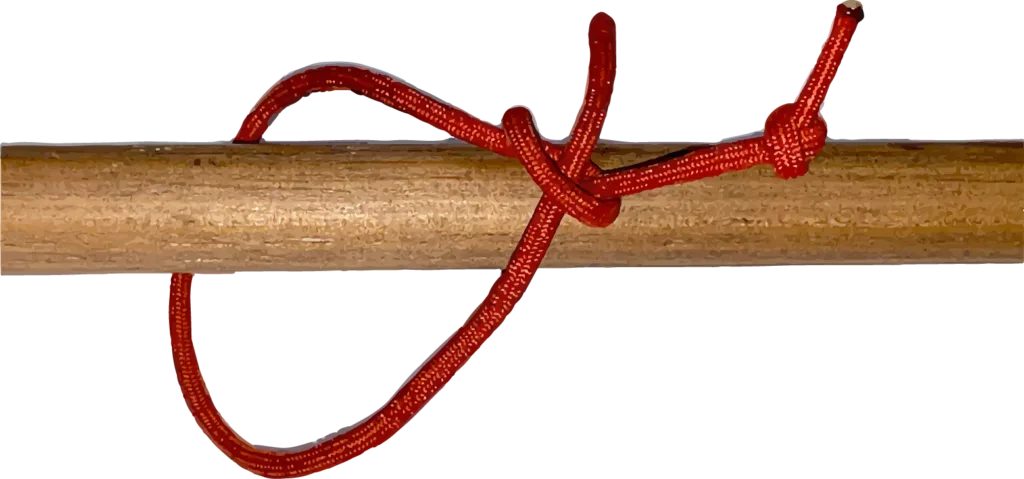
Jim Baird
Step 2: Run the cordage around a pole (or line around reel spool), then slip the tag end through the loose knot. As you pull the tag end back on itself to tighten, the loose knot will tighten and cinch up on the overhand knot at the end of the cordage. That’s when you should keep pulling even harder. The tighter you pull, the tighter the knot will get.
**Read Next: Tying a Hook to a Fishing Line
**
How to Tie a Square Knot

A completed Square Knot. Jim Baird
The Square Knot—also referred to as a Reef Knot—is one of the most basic knots, and the first one that many cub scouts are taught. It’s fast and works great for tying two ropes of the same diameter together.
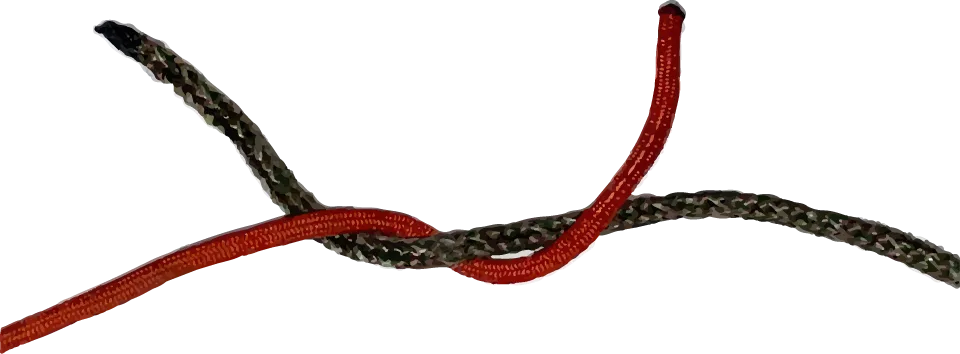
Jim Baird
Step 1: Take two lines that are about equal in diameter and stack one on top of the other. Holding one in each hand, cross the red line over the green line, then wrap it under green line once. Next, wrap the green line under the red line.

Jim Baird
Step 2: Bring both ends back to the middle. Cross the red line over the green line, wrap it under once, pull tight, and you’ve got yourself a Square Knot.
How to Tie a Quick Release Knot
The Quick Release Knot—also known as a Slippery Half-Hitch—is useful when you’re setting up a tarp or lashing down to a toboggan. It’s fast to tie and excellent to use when you want a knot you can untie quickly. The Quick-Release Knot is not a strong or particularly secure knot, however, so you’ll want to use it in low-risk scenarios.
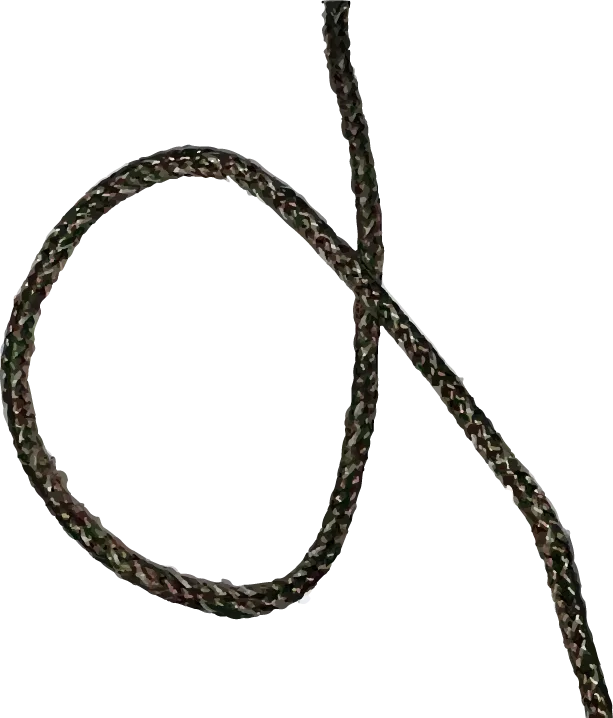
Jim Baird
Step 1: Make a loop in the line by crossing the line over itself.
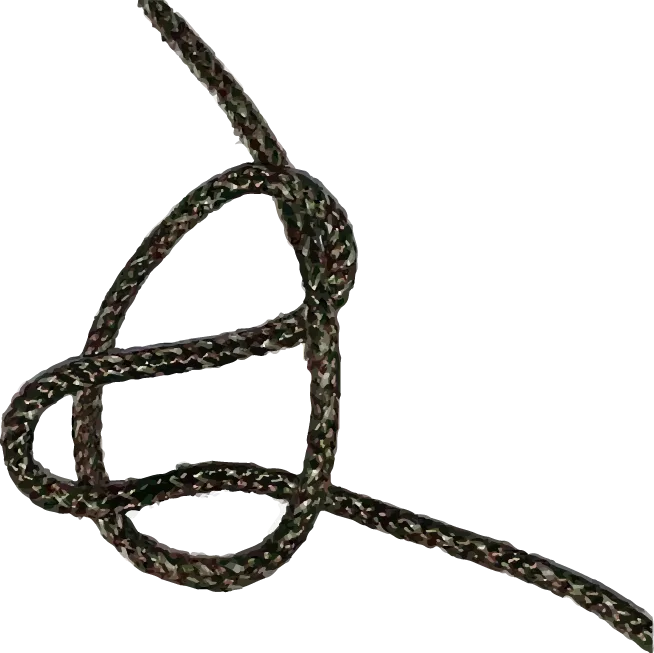
Jim Baird
Step 2: Pinch a second loop in the line and feed it through the first loop.
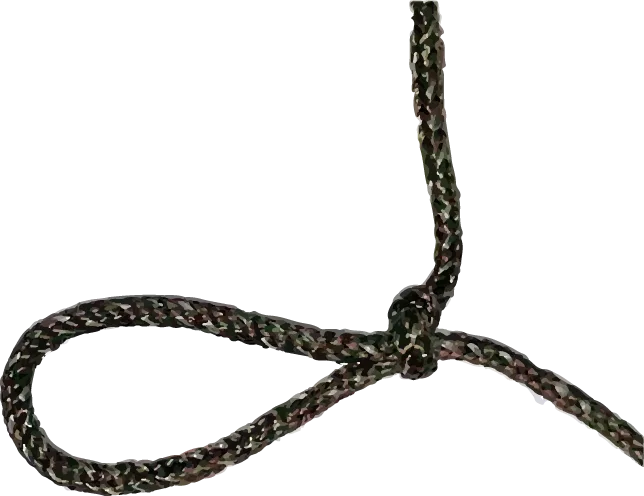
Jim Baird
Step 3: Pull tight, and you’re finished. With a firm pull on the tag end, the Quick Release Knot will come undone easily.
How to Tie a Bowline Knot

A completed Bowline. Jim Baird
The Bowline is one of the most commonly used outdoor knots. It’s great for tying up your food bag before hanging it and, though it’s debatable where this knot’s namesake is derived from, it’s the perfect knot to use when affixing a loop at the end of your, well, bowline. The knot enables you to make a tight, fixed loop that won’t slip but will also come undone quickly, even after being under significant pressure. It’s truly one of the most useful nots out there if not the most useful.
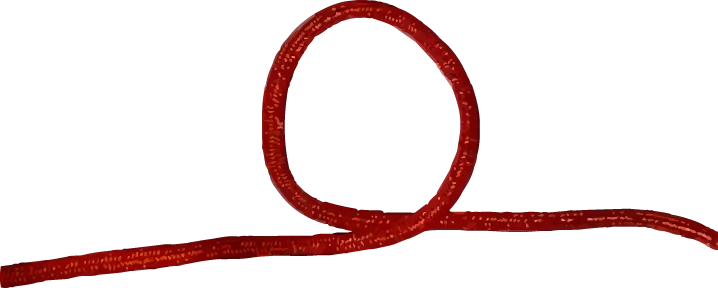
Jim Baird
Step 1: Make a loop in your cordage a ways up from the end.
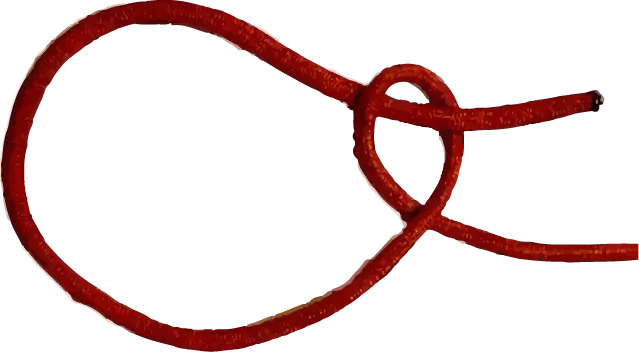
Jim Baird
Step 2: Feed the tag end up through the loop from the bottom.
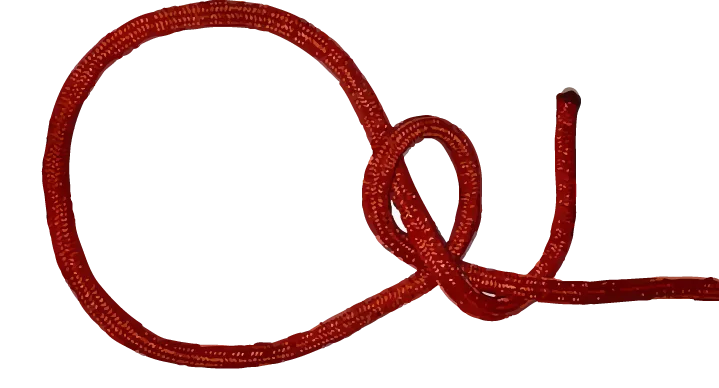
Jim Baird
Step 3: Run the tag end behind the main line of the cordage and wrap it around the standing end.
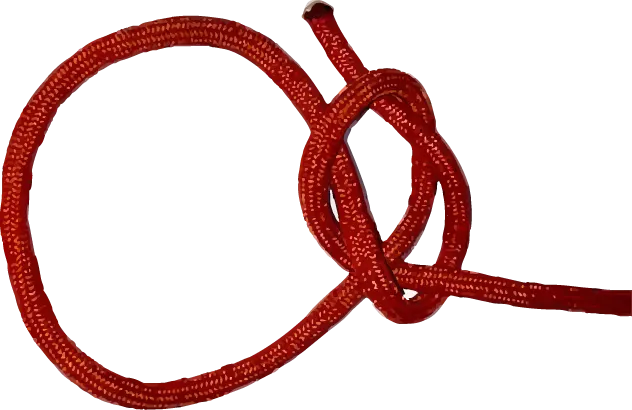
Jim Baird
Step 4: Feed the tag end back through the loop from the top and pull tight.
How to Tie the Heaving Line Knot
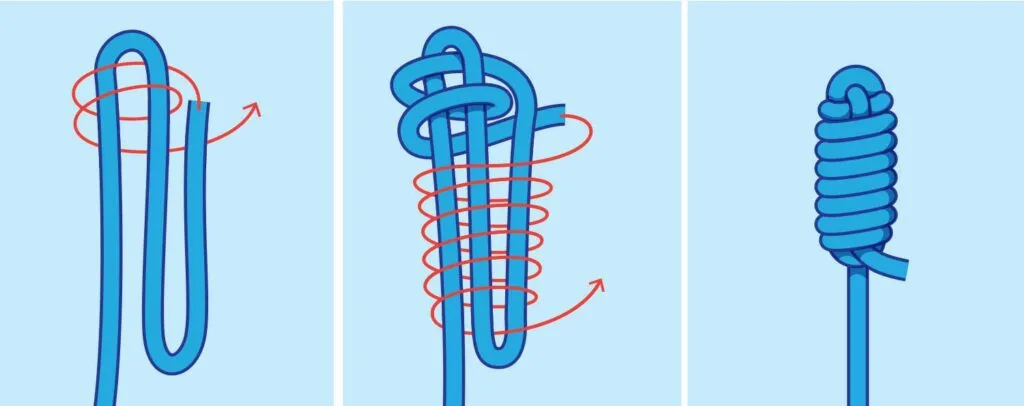
The heaving line knot. Pete Sucheski
The heaving line knot is simple and is put together to add bulk and weight to the end of a rope so it can be thrown more easily. It’s great for throwing cordage up to a person in a deer stand, throwing rope from your boat to a dock, or throwing a rope over a branch to hang a bear bag in a tree.
The Heaving Line Knot:
Make two bights and put them next to one another.
Pass the working end through the top bight and wrap it around both strands of cordage, ensuring the line does not cross on the way down.
Push the working end through the opening of the bottom bight to finish the knot.
Tighten up any slack by first pulling the top loop, then down on the remaining cordage.
How to Tie the Prusik Knot
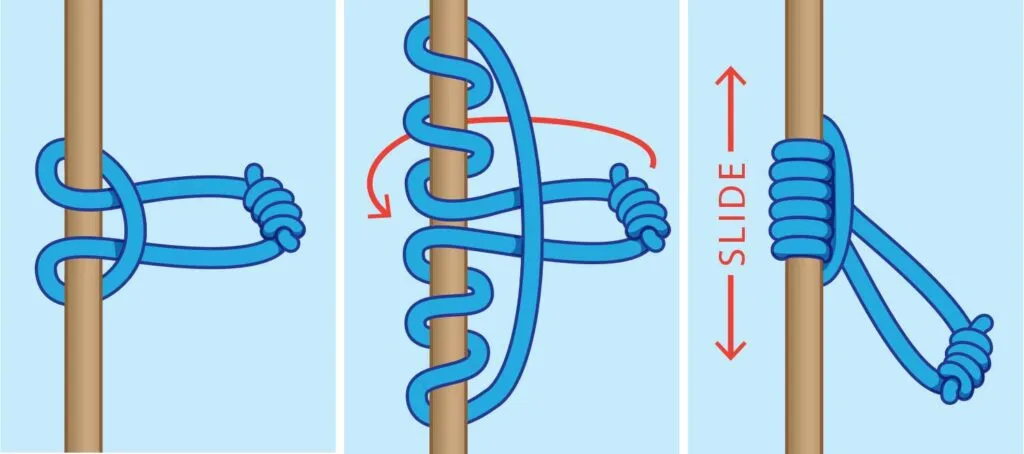
The prusik knot. Pete Sucheski
abs when you want it to grab. This a great knot to tie along another rope (second rope must be bigger in diameter for it to be effective), or along a cylindrical pipe or tube.
The Prusik Knot:
Form a loop that you lay upon the rope, pipe, etc. you are tying to.
Wrap the cordage three times, inside the loop.
Ensure that the turns lie next to one another and do not cross.
Pull the knot tight.
When you need it to slide, grasp it at the turns and slide it along. When you need it to bind, pull from the extended, looped end. This serves as a great backup for climbers and those who rappel. It also serves as a great way to tie off ends of a tarp on a ridgeline, or to help secure gear or a person on a steep incline.
The Fisherman’s Knot
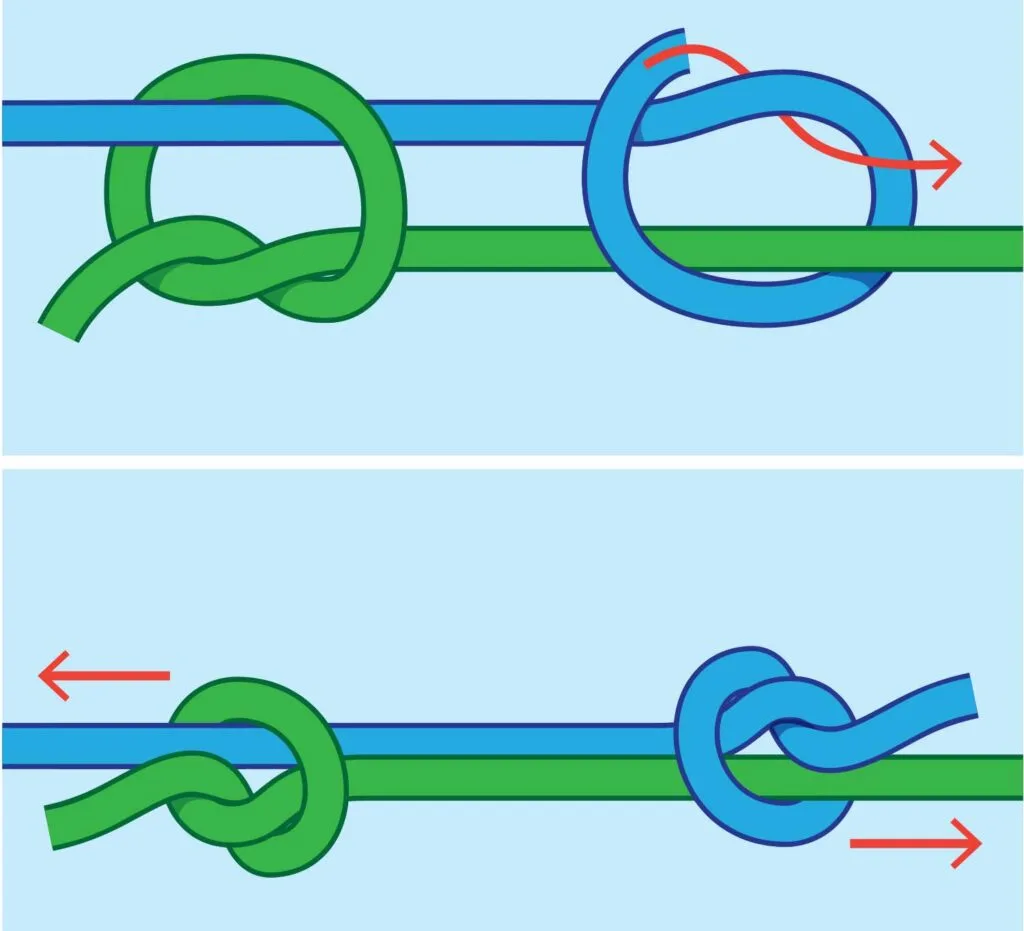
The fisherman’s knot. Pete Sucheski
end, so you will hear it called both names. As you would guess, this is used to join two pieces of cordage that are similar in size, together.
The Fisherman’s Knot:
Bring the working ends of two ropes together. The working ends should be pointing in opposite directions of one another.
Use one working end to tie an overhand knot around the other rope’s working end. Then repeat those steps with the second piece of cordage.
Tighten each individual knot, then slide the two knots together by pulling on each rope. Each knot serves as a stopper for the other.
As a safety measure, you can tie off the “tail” left behind along the rope as well. The best thing about this knot is that even after it is put under lots of pressure, it unties rather easily. It’s a great basic knot to use any time you need to join ropes.
Basic Hitches: How to Tie Them
How to Tie a Trucker’s Hitch
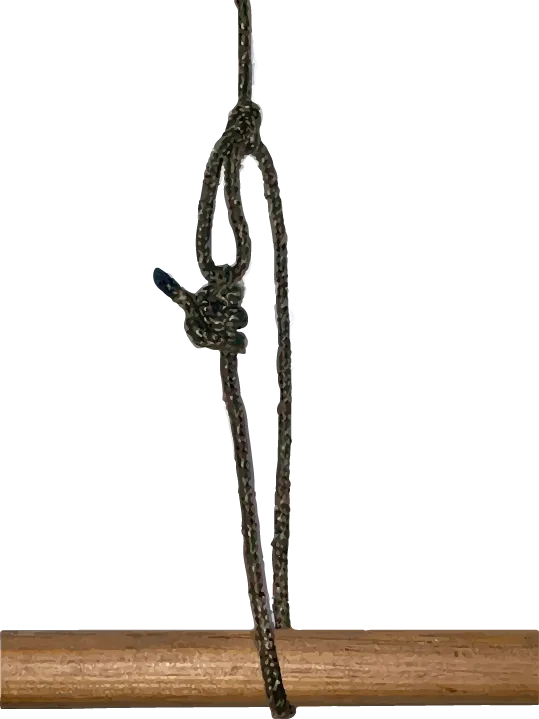
A completed Trucker’s Hitch. Jim Baird
The Trucker’s Hitch is a strong knot that’s used when you need to create leverage to get something really tight. It’s great for rigging canoes and other small boats to the roof of a vehicle or securing guy lines on a tent when the wind starts to blow. A Trucker’s Hitch is actually made up of three other knots. To tie a one, you first need to secure one end of your line to an anchor point, such as a nylon guy loop on the outside of your tent’s fly, or to one side of your roof rack.

Jim Baird
Step 1: Make a large, U-shaped bend in the line
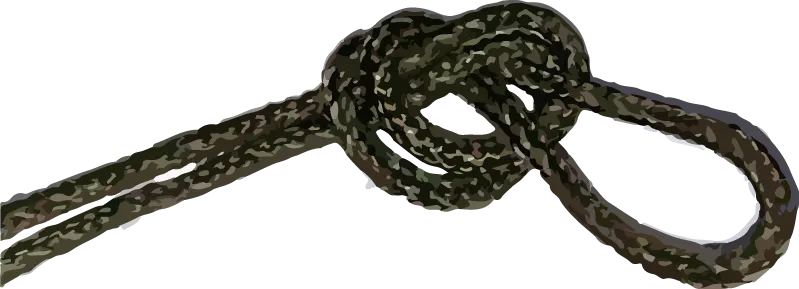
Jim Baird
Step 2: Tie an overhand knot with the U-shaped section of line to create a loop. Pull tight.
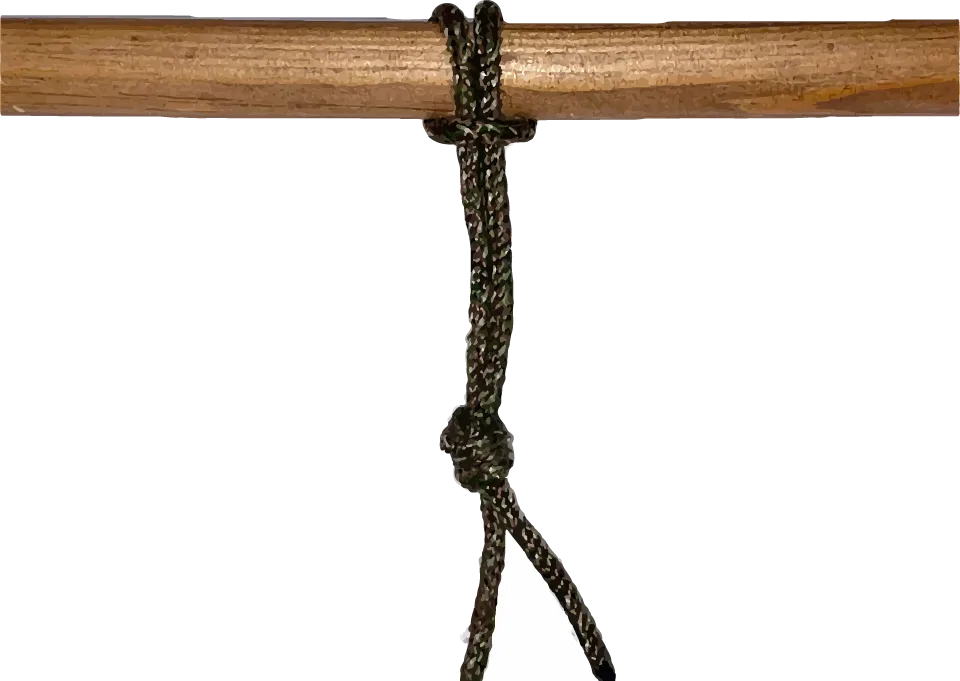
Jim Baird
Step 3: Lay the loop over your anchor point, such as a roof rack, and run the long end of the line back through the loop to secure it around your anchor point. Next, you’ll need to tie a Quick Release Knot (see above) a couple of feet from the end of the line.
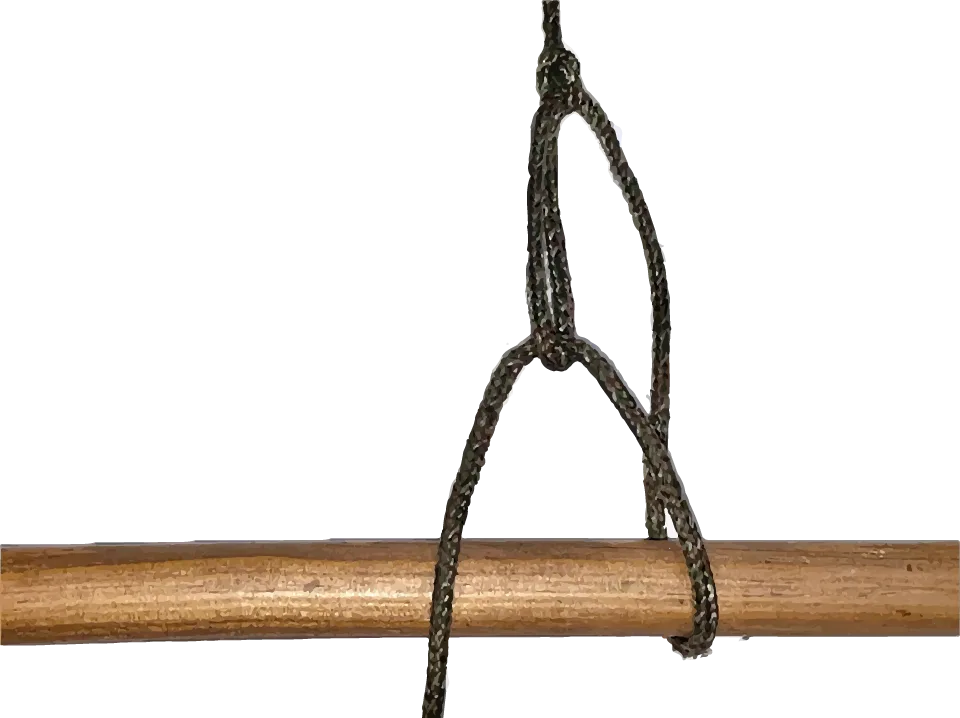
Jim Baird
Step 4: Feed the end of the line under, or around, whatever you want to anchor the rope to (tent peg, sapling, roof rack, etc.), then feed it back through the loop you created with the Quick Release Knot. Now, pull down tightly and hold the tension.

Jim Baird
Step 5: While continuing to maintain tension, pinch the line where it runs through the loop so that it doesn’t slip and loosen. With the line pinched, tie a Half Hitch under the loop and tighten it snugly to the bottom of the loop. Once this first Half Hitch is tight, you can let go and follow up with additional Half Hitches for more security.
How to Tie Two Half Hitches

Two half hitches. Pete Sucheski
Tying two half hitch knots (never just one) is a great way to secure a rope to a post, tree, ATV, truck, tractor, or basically anything. It is often used to tie off a canoe to a bank, hang deer for processing, secure tarps to stakes
, or to secure more gear to your pack. It works well, especially in concert with other hitches or connection points in which you can pull it tightly to hold a load.
Two Half Hitches:
Take the working end of your cordage and pass it around your connection point (pole, tree, etc) then around itself.
Then pass the working end between the ropes to make one half-hitch. Remember, only one is very insecure.
Pass the working end around the rope again to make the second half hitch knot.
Dress up the half-hitches to remove any slack and push them together for something more secure.
How to Tie the Clove Hitch
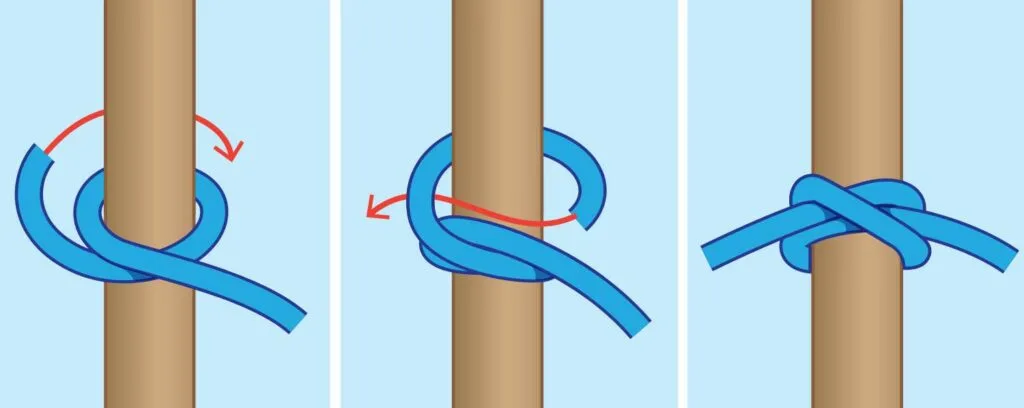
The clove hitch. Pete Sucheski
The clove hitch knot is tied two different ways depending upon how it is being used. Method number one involves tying it to a post or tree that you cannot reach the top of.
The Clove Hitch – Method 1:
Make a turn with your working end around the tree.
Cross over the standing part of the cordage.
Tuck the working end under the standing end of step 2 and pull tight.
Another use for this hitch is when you can reach over the top of a post. You can also use this to secure a small object that acts as a holding piece when using it to secure part of a tarp. If a loop or grommet on a tarp is torn out, you can use this to secure cordage
to it instead.
The Clove Hitch – Method 2:
With two pieces of the same rope in hand, place the one in your right hand on top of the one on the left.
Hold that with your left hand, as you do it again with a second loop.
Place the second loop behind the first loop.
Now slip both of the loops over an attachment point. It could be a fence post, cut off tree, or around an acorn wrapped in a tarp.
Keep in mind that this hitch is effective when the load is pulled at a right angle to the attachment point. Anything else, and it starts to loosen.
How to Tie the Pile Hitch
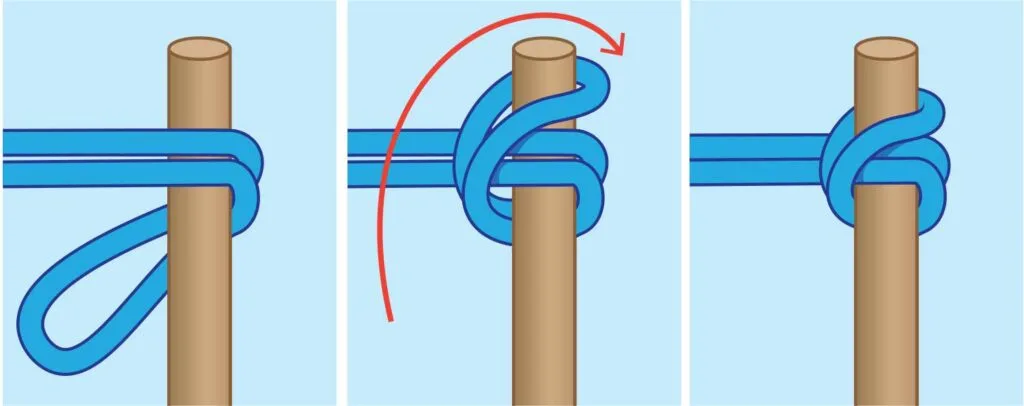
The pile hitch. Pete Sucheski
When you want a hitch that is simple, look no further than a pile hitch. Sometimes referred to as post, or stake hitch. It works great when you are attaching to anything that is upright that you can reach over the top of.
The Pile Hitch:
Take a bight in the rope and wrap it around your point of anchor.
Ensure the loop goes under the standing part of the cordage.
Now place the loop over the top of the post, stake, etc.
You can alternatively use this hitch to secure cordage
to a handle and turn the handle to pull slack and tighten the standing part to anything needed. You will want to secure the handle once you finish tightening, so it does not loosen.
How to Tie the Killick Hitch
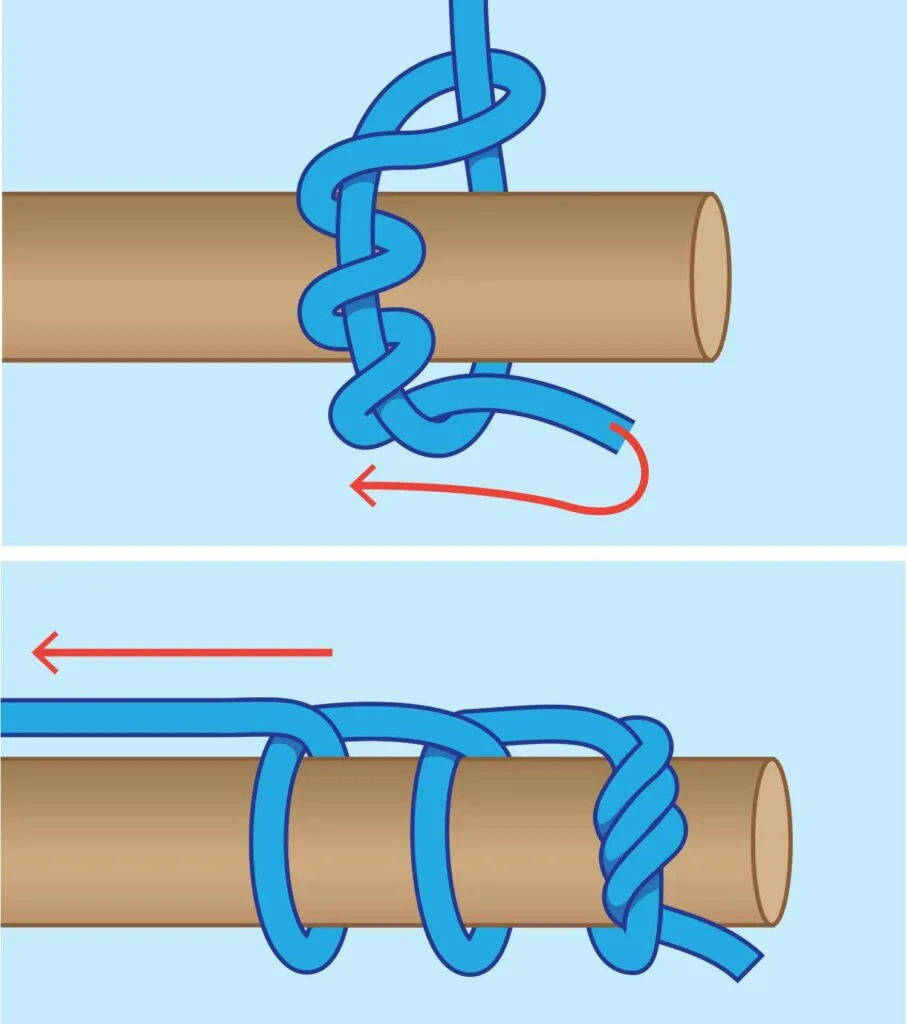
The killick hitch. Pete Sucheski
The killick hitch is also known as a timber hitch. Historically it was used to haul or pick up logs and trees. It can also be used as a self-tightening lock on piles of sticks, pipes, or other lengthy objects. This hitch can also be used as a quick-release method of attaching to a tree or post.
How to tie a killick hitch:
Wrap the working end of your rope around your anchor points and then wrap several wraps around the standing part.
Tighten and cinch the result down to your anchor.
If you use this for dragging then repeat some half-hitches along the length for straighter dragging.
That about sums it up for some really simple, easy-to-tie knots and hitches. We have offered some uses here, but those uses are only limited only by your creativity. Use them in any way that you see fit, and please get some practice before you need them in the field.
Common Knot Tying Terms
If you want to learn how to tie a knot, it helps to know the lingo. Here are some of the most common, and useful, terms to know when it comes to knots.
Working End (aka the Running End): The end of the rope that is used to tie the knot. The rest of the rope is referred to as the standing part.
Loop: When you place the working end of the rope over or under the standing part of the rope you form a loop.
Bight: When you double back part of the rope against itself without crossing over it’s called a bight.
Knot: A knot is used to join two ropes together or a rope to itself.
Hitch: A hitch is used to fix a rope to another object. Some sources suggest a hitch is a type of knot, but a distinction is warranted for many.
Bend: A type of knot used to join two lengths of cordage.

